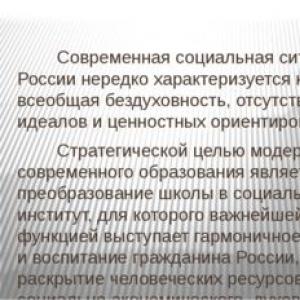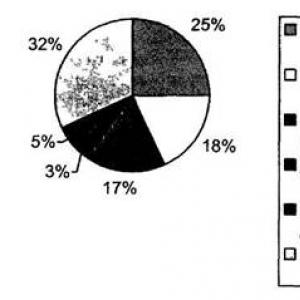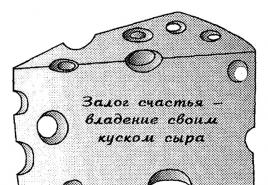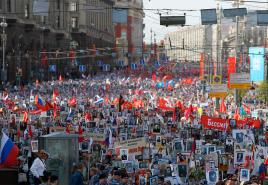Man is descended from a pig. A new look at human origins: the theory of swine genesis
Bishop Seraphim (Sigrist) USA seraphimsigrist
The Book of Revelation in Orthodox Worship and Inner Spiritual Life
Carlo Carra Horsemen of the Apocalypse, 1908. Art Institute, Chicago
M.Vrubel
Albrecht Durer, The Revelation of John the Evangelist: The Four Horsemen of the Apocalypse, 1497-98, woodcut, Staatliche Kunsthalle, Karlsruhe

Vision of the white horse, The
Artist: DE LOUTHERBOURG, Philippe Jacques
Date: 1798
Technique: Oil on canvas
Location: Tate Collections

Masha Shmakoff
Rider on a white horse

The Rider on the White Horse by George Frederic Watts
Rider on a white horse
First seal
The "opening" of the "first seal" marks the appearance of the rider on a white horse (Rev. 6: 1-2). The horseman in Holy Scripture serves as a symbol of royal power, earthly kingdom; accordingly, the riders appearing one after another signify the change of eras that have this or that spiritual fulfillment. White color in Holy Scripture is a symbol of purity and holiness; Christ sometimes appears as a rider on a white horse (Rev. 19:11). All this suggests that "the opening of the first seal" will mean the beginning of the era of the spiritual triumph of Christianity in the world. It does not at all follow from this that the Church will become dominant in the world and everyone will become Christians; also, one should not draw conclusions about external well-being in this era. It is rather about the spiritual flourishing of the Church, when the radiance of Her holiness, perhaps, will again become as bright as in the early Christian times. Somechristian mystics confuse this time with the millennial Kingdom of Christ (cf. Rev. 20: 4-6), while it is, in essence, not its beginning, but its completion, for this Kingdom began on the day of the Savior's death on the cross with the resurrection of the first saints (Mt. 27:52). How long this era will last is unknown, just as the duration of all other apocalyptic eras, and the time of the Last Judgment itself, is unknown.
Rider on a red horse
Second seal
“The opening of the second seal” marks the appearance of a rider on a red horse - a symbol of a new era, an era of world wars and disorder (Rev. 6: 3-4). Probably, the world, once again rejecting the light of Christ revealed to it, will plunge into the abyss of all-Lena turmoil, accompanied by more frequent natural disasters. This, apparently, is the "famines, pestilences and earthquakes in places" promised by the Savior at the end of times (Mt. 24: 7-8). At the same time, the persecution of the Church will probably begin - a harbinger of the Antichrist persecution (Mt. 24: 9-14). In a sense, every time of Troubles in history is a prototype of this last troubles, but at the end of time, it seems to be universal. It doesn't have to be, as is sometimes thought, world War; local sluggish wars can be spiritually even more destructive, because world war begins and ends usually during the lifetime of one generation, and the so-called. "Small wars" can drag on for decades, so that generations of people are born who, since childhood, have seen nothing in their lives except war and turmoil. But such a universal turmoil, of course, cannot continue indefinitely.
V.V. Sorokin

George Frederic Watts
British, 1817 - 1904
The rider on the black horse
Black horse rider
Third seal
After the “opening of the third seal,” a rider on a raven horse appears with a measure in his hand (Rev. 6: 5-6). The black horse is opposed to white: if white is a symbol of grace, then black means the complete gracelessness of that era, which is personified by a rider with a measure in his hand. Obviously, peace and order on earth will be restored by him, and the whole world will be ruled - a graceless, inherently anti-spiritual civilization will embrace the entire planet. It is very likely that then there will be only one ruler on Earth, and his regime will be completely totalitarian. Of course, any totalitarian regime carriesto imagine something of the antichrist; but the epoch to come will obviously surpass everything achieved in this sense. It does not at all follow from this that people will perish solely from the terror of the authorities - modern civilization, even with a completely democratic outward structure, may well subjugate a person socially and psychologically - “soft terror” of the environment and “ public opinion"Is sometimes more effective than state terror. It is possible that the supercivilization of the later times will use both of these levers. The prohibition to touch bread and wine, which personify grace in the Holy Scriptures, speaks of her perfect gracelessness (Rev. 6: 5-6). The text of the Apocalypse also contains indirect indications of the development in the last times of magic and magical means of influencing the human psyche (Rev. 13: 12-15). Such a combination of technology and magic, perhaps, will make control over a person completely total, so that anyone who wants to maintain spiritual independence will be outside of society and, obviously, persecuted (Rev. 13:16).
V. Sorokin

William blake
Death on a pale horse
c. 1800 Pen and watercolor,
393 x 311 mm
Cambridge, Fitzwilliam Museum
The rider on the pale horse
Fourth seal
"The opening of the fourth seal" means the appearance of the Antichrist in the world (Rev. 6: 7-8). The horse is "pale", i.e. colorless, means the infiniteness of the coming era from the point of view of metahistory: the antichrist is outside of History as a providential process; it is the embodiment of the spirit of darkness, striving into nothingness. It is not excluded that outwardly the Antichrist will come to power in a completely "earthly" way; but in the end he will certainly manifest his satanic essence, most likely by introducing some kind of obligatory quasi-religion, in the center of which he will stand (Rev. 13: 5-8). “The fourth part of the earth” (Rev. 6: 8) means, probably, the partial subordination of nature (through its perversion) to the power of the Antichrist (the number 4 in kabbalistic symbolism means the elemental principles; “the fourth part” denotes their partial involvement in the Antichrists the idea of \u200b\u200bconquering power over the world).
V. Sorokin

Horseman of death, The
Artist: COLOMBE, Jean
Date: 1485-89
Technique: Illumination
Location: Musée Condé, Chantilly
Notes: From "Très Riches Heures du Duc de Berry"
Viktor Mikhailovich Vasnetsov, Warriors of the Apocalypse, 1887 zoom !!
B. Anisfeld. Four horsemen of the Apocalypse. 1940s
Arnold Becklin
Arbo. Valkyries
Turner Rider on a Pale Horse 1825-1830 
Ashley wood
Riders of Denis Mezentsev
And these are the pictures posted on the dreamworld .. the pheone did not find the authors:
Metallica ..
The Four Horsemen:
The first horseman of the Apocalypse is also called the "Plague", which is also very symbolic from the point of view of theology. This can be interpreted as some kind of false doctrine, which is comparable in scale to the plague pandemic.
Rider on a red horse
When the Lamb removes the second seal, the second rider will step on the ground, he will sit on a red horse with a large sword in his hands. This rider is destined to "take the world from the earth" so that people kill each other. The second horseman traditionally symbolizes, so large-scale and destructive that it should affect all corners of the world.The red horse represents the spilled blood. he was preceded by the appearance of the first horseman, this, according to researchers, should mean that a war will begin and a lot of blood will be shed soon after his arrival. Most likely, this means the coming to earth of the Antichrist and, probably, he will untie it.
Black horse rider
The third horseman of the Apocalypse will appear after the War. John in his vision heard a voice that said: "A chinix of wheat for a denarius and three chinix of barley for a denarius." These words speak of a global crop failure and subsequent famine, when grain prices will be unimaginably high. At the same time, the rider was told that he should not have oil and wine; vineyards and olive trees would be less affected by drought. The black color is traditionally considered black, with this term the concepts of total or global are identified.For example, the bubonic plague that broke out in the Middle Ages was called the "Black Death" because it wiped out a third of the population of Europe.
Some interpreters are inclined to believe that the second horseman symbolizes world hunger, others believe that here John the Theologian speaks in an allegorical form about the rich and the poor, those who buy a hinix of wheat for a denarius and those who consume oil and wine, i.e. those who go to church and observe the sacraments of the sacrament and chrismation. Those. the rider will harm only the rich and the depraved and will not touch believing Christians.
The rider on the pale horse
The fourth horseman, John the Theologian calls "Death", he will have to have power over the fourth part of humanity, destroyed by war and hunger. The pale color of a horse personifies the skin color of a deceased person or a person in death throes. It is not known from Revelation whether the fourth horseman has any object in his hands. In a 16th century engraving by Albrecht Durer, the last horseman carries a trident in his hands, but in other paintings, drawings and illustrations he is depicted with a scythe in his hands.The last words, dedicated to the fourth horseman, tell that "hell follows him." This may mean that the fourth horseman will be the last, and after him such a nightmare will begin, which will seem like hell to his contemporaries, because after the horsemen of the Apocalypse angels begin to trumpet, announcing colossal cataclysms that have never happened on Earth.







